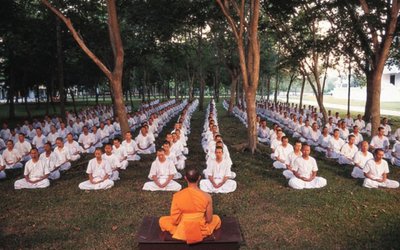Magh 2 reminds us of the day in 1934 when a devastating earthquake had hit Nepal killing thousands of people. That was when the total population was far below what it is today, with fewer concrete buildings and virtually no high-rises.
The 1934 earthquake – known as nabbesalko bhuichalo or the 90’s earthquake-- destroyed 20 per cent buildings in Kathmandu valley. It damaged 40 per cent of them. As such, Kathmandu saw a quarter of homes, along with several historic sites, destroyed.
In the 20th century, over 11,000 people have lost their lives to earthquakes in Nepal. Geologists believe Nepal is at risk from an earthquake with a magnitude of around eight in the Richter scale, that is, 10 times as powerful as the Haiti shock that killed more than 212,000 people.
Nepal is in a highly volatile seismic zone on the border between two huge plates that have moved together over millions of years to form the Himalayas. The country lies in moving and colliding Indian and Eurasian plates making it prone to frequent earthquakes.
Nepal ranks 11th in terms of quake hazards and seismic faults in the world which means it is not surprising for Nepal to fall victim to natural disasters such as landslides and earthquakes.
In fact, Nepal was originally formed following a huge earthquake over 60 million years ago involving the Eurasian and the Indo-Australian plates. This earthquake was of such immense power that it resulted in the high peaks which we now know as the Himalayas.
At the climax of the collision between tectonic plates that thrust up the Himalayas, Nepal was crisscrossed by geologic fault lines - some of which have been building up pressure for centuries. Even if a quake happens 300 km away, measuring 6 or 7 in magnitude on the Richter scale at its epicenter, it could generate level VIII, IX or even X of shaking on the Mercalli scale in Kathmandu.
It is not usually the earthquake itself which results in the high number of casualties but, instead, the poor reinforcement of buildings.
But it is said Kathmandu would suffer the worst losses. Very low building standards, weak infrastructure and the fact that Kathmandu is built on the soft sediment of a former lake bed all contribute to the high risk level.
In spite of such risks, high-rise buildings are mushrooming in Nepal. High-rise buildings are constructed largely because they can create a lot of real estate value out of a fairly small piece of land.
These reasons, however, do not support why high rises are built on low standards. Worse still, Kathmandu has only two main roads routed towards medical facilities and only one runway. Consequently, any disruption, damage or blockage of these roads could easily have devastating consequences.
- SWISS SUPPORT: Construction Of A Trekking Trail In Koshi
- Dec 19, 2024
- PM OLI'S VISIT TO CHINA: BRI Agreement
- Dec 16, 2024
- RASUWAGADHI AND SANJEN: Begin Generation
- Dec 03, 2024
- NEPAL, INDIA ELECTRICITY TRADE Nepal's Advantage
- Dec 02, 2024
- PM Oli'S VISIT TO CHINA: Nepal's Dilemma
- Dec 01, 2024
















